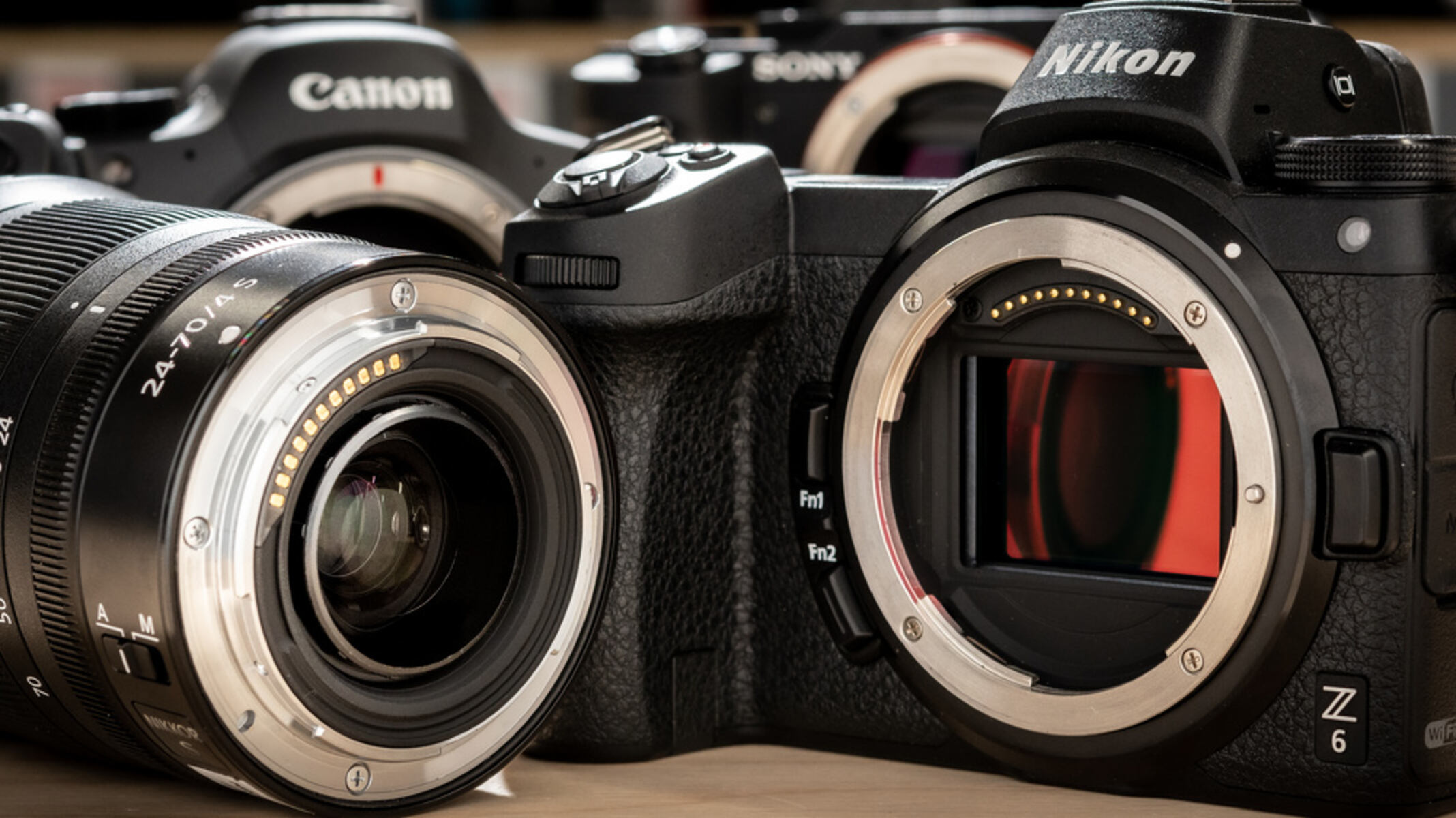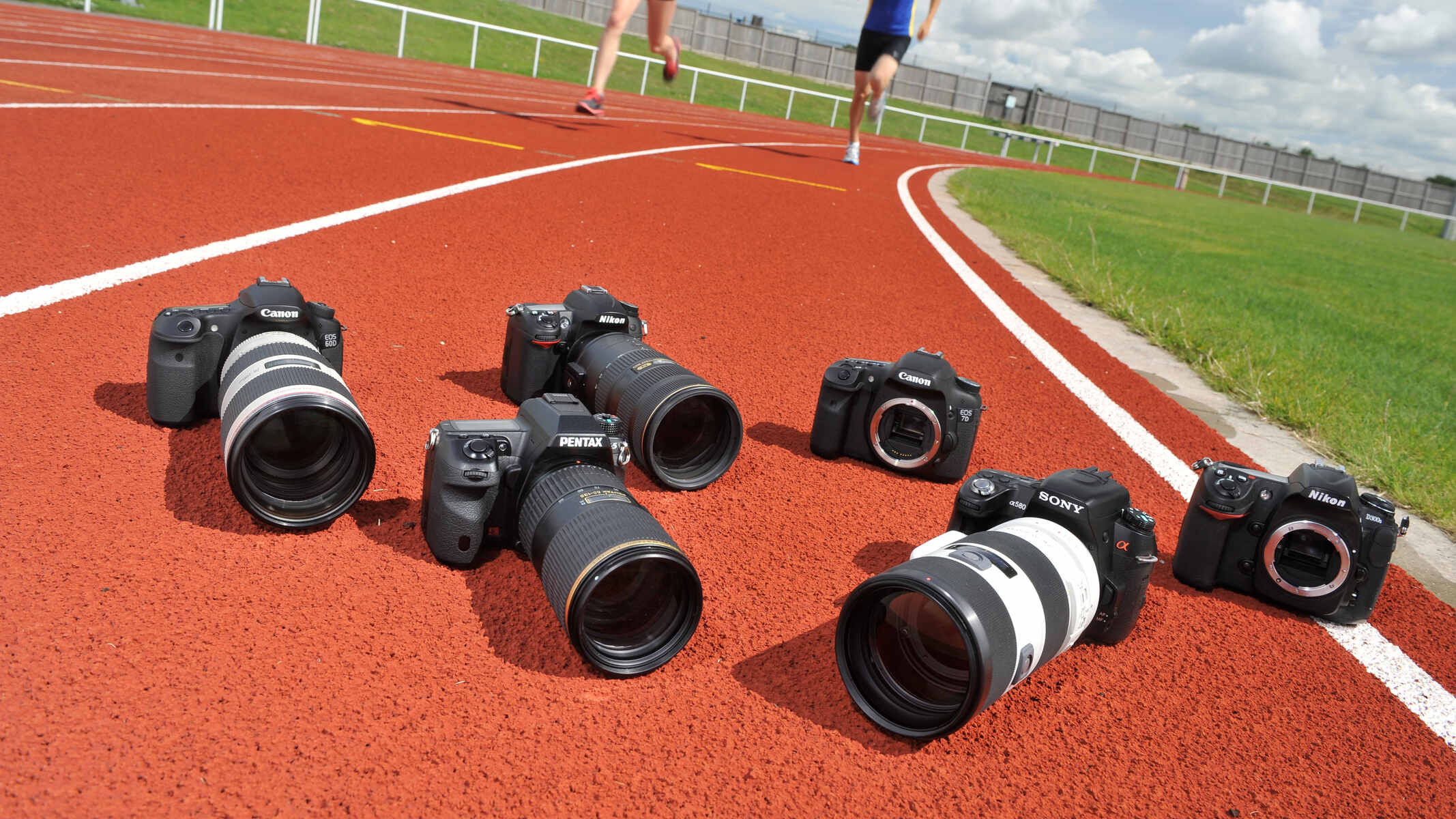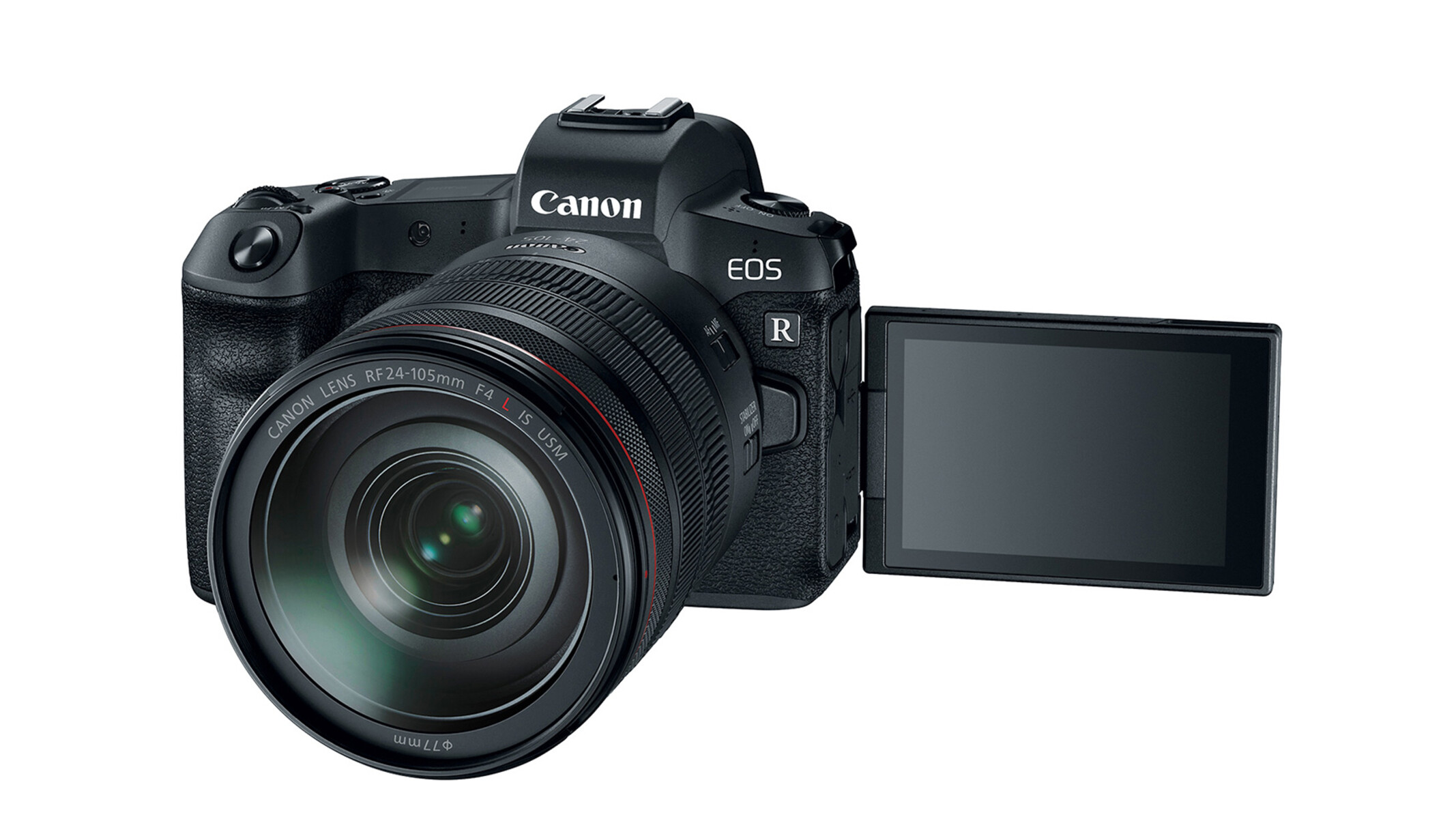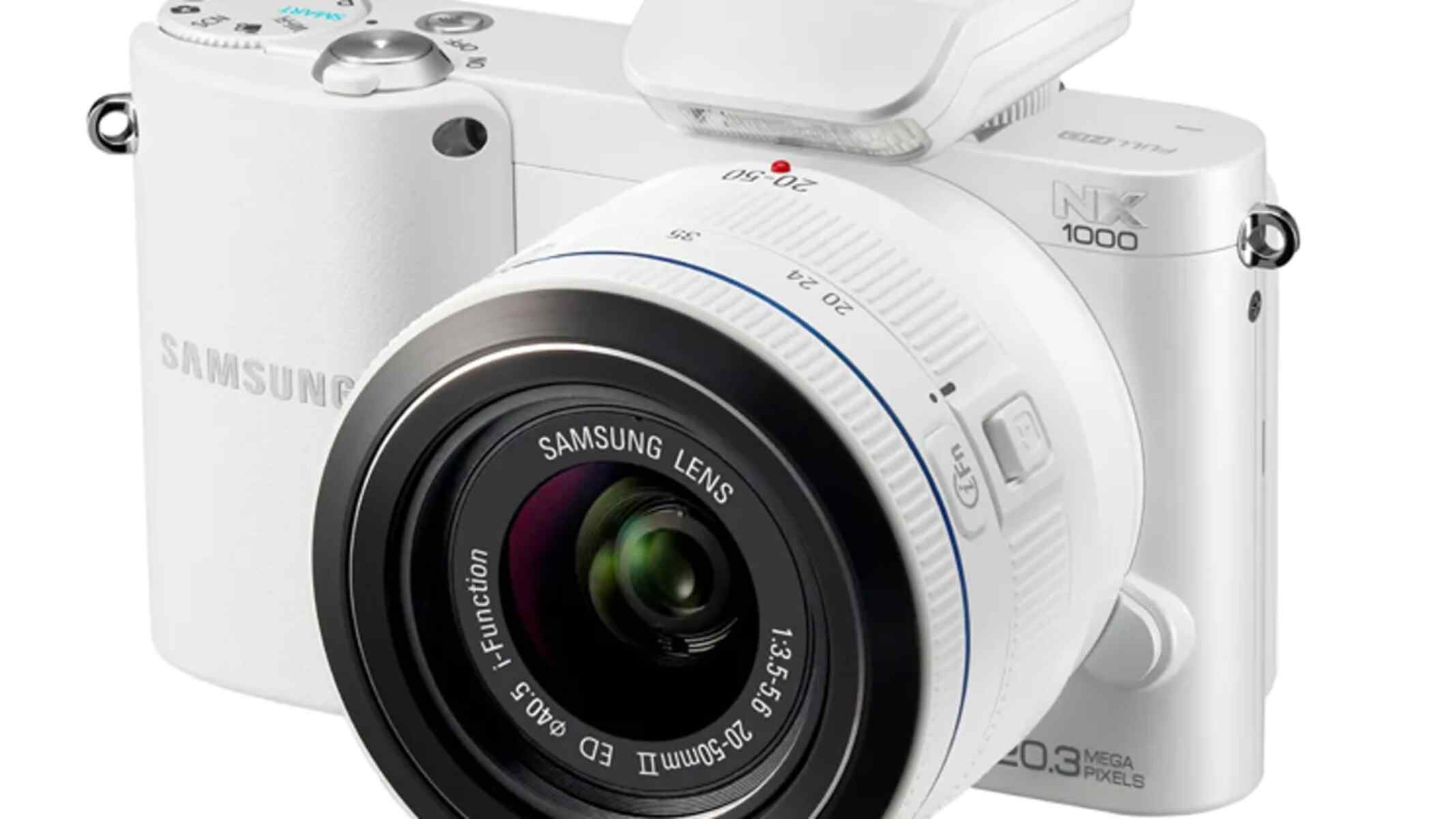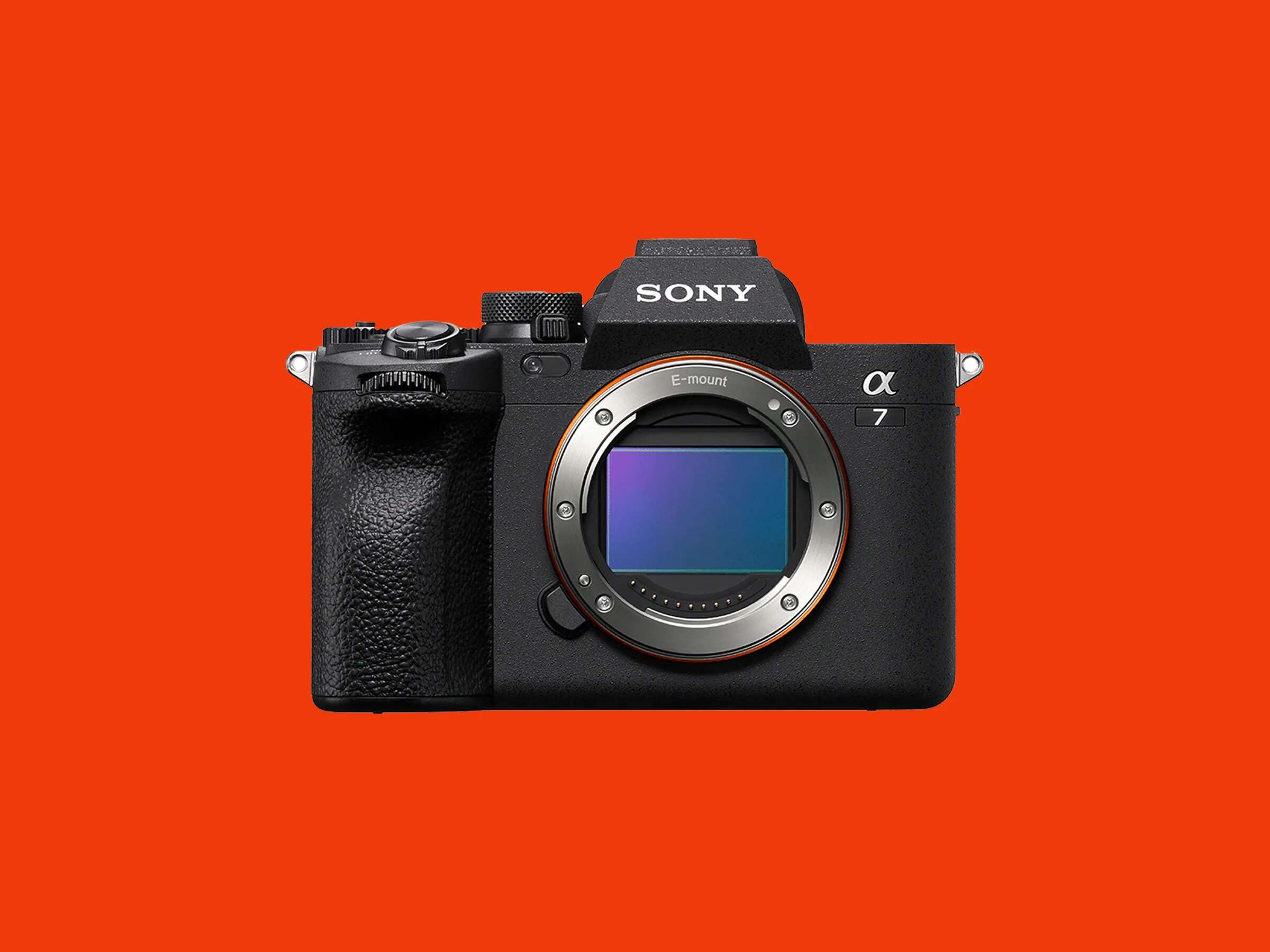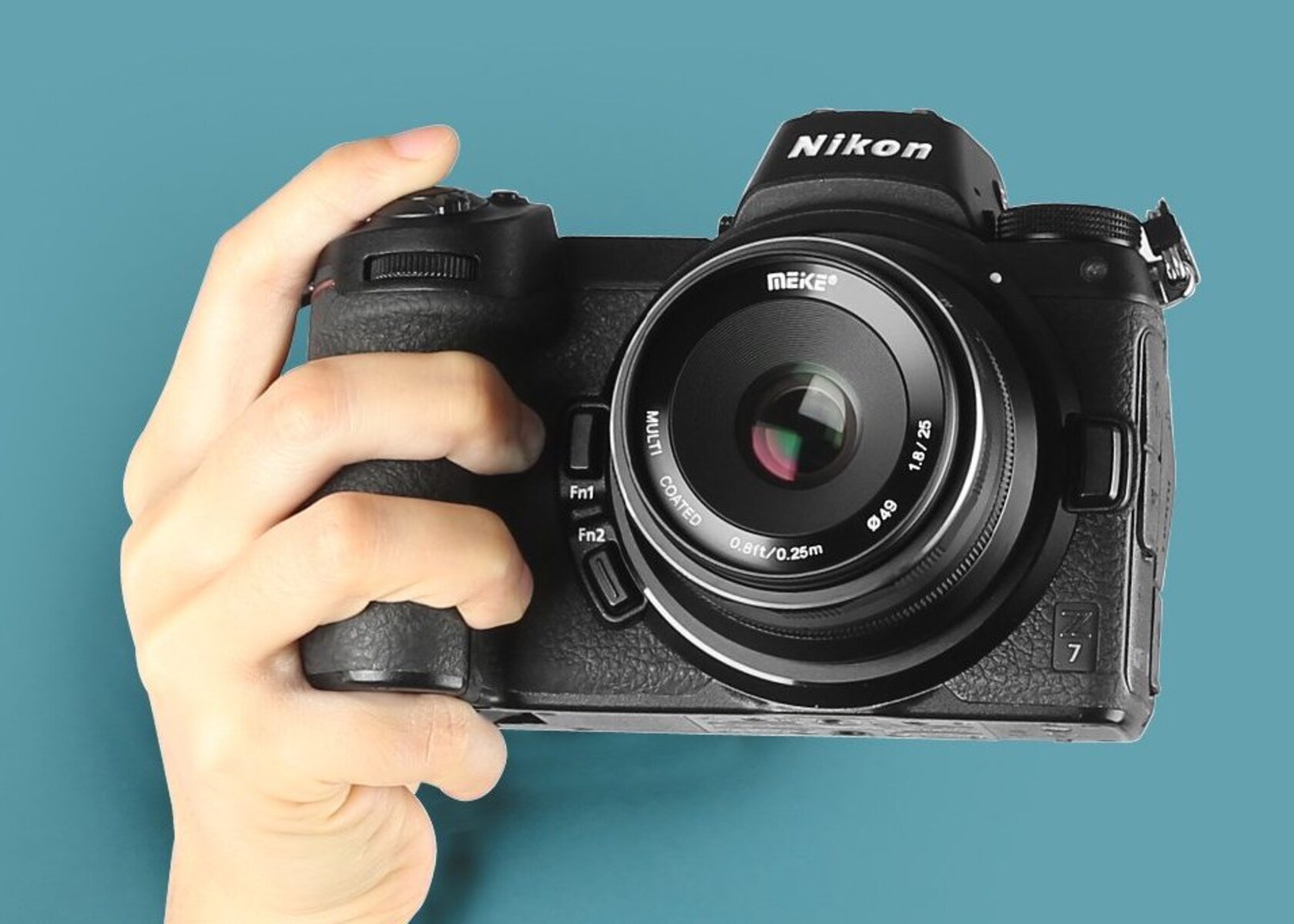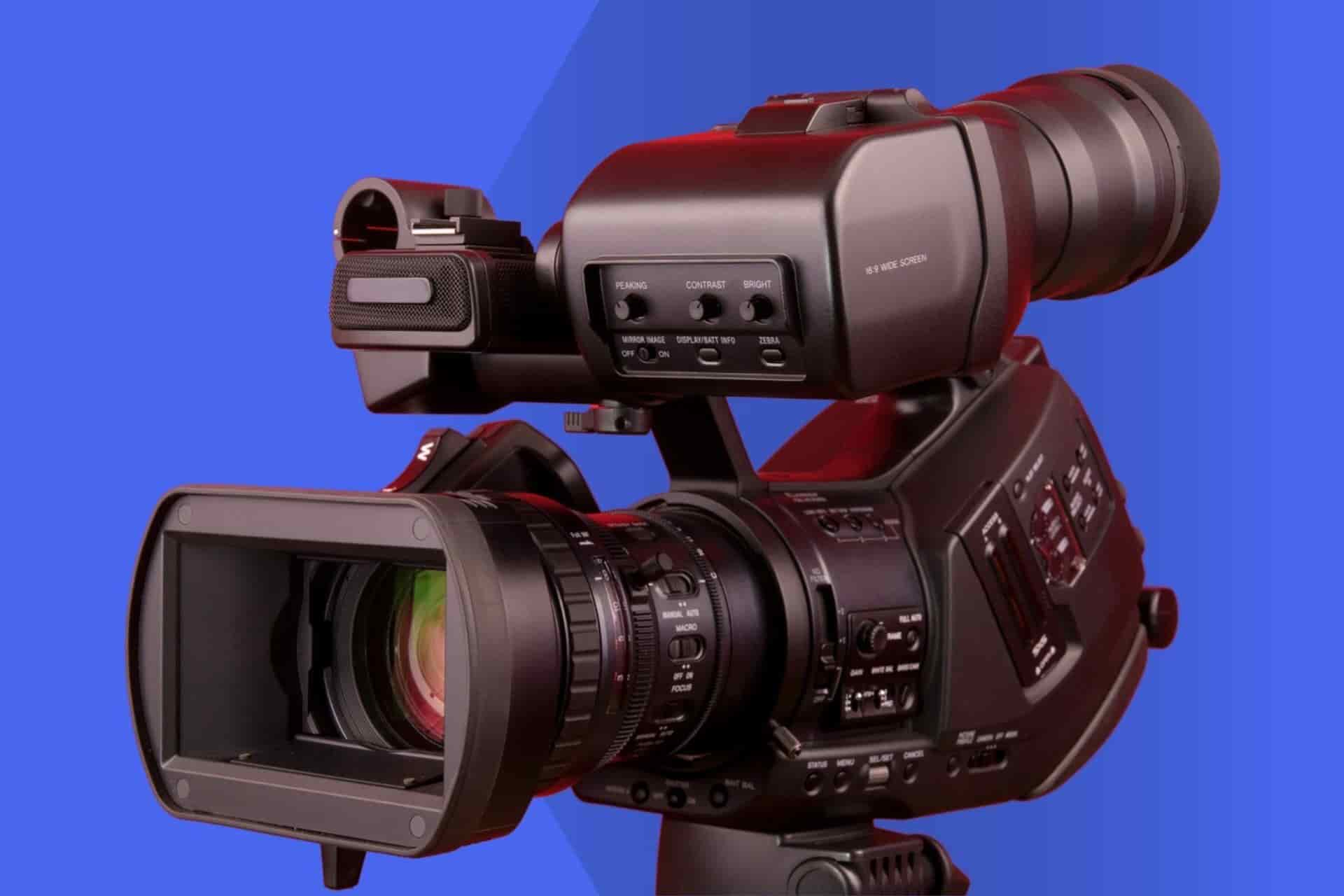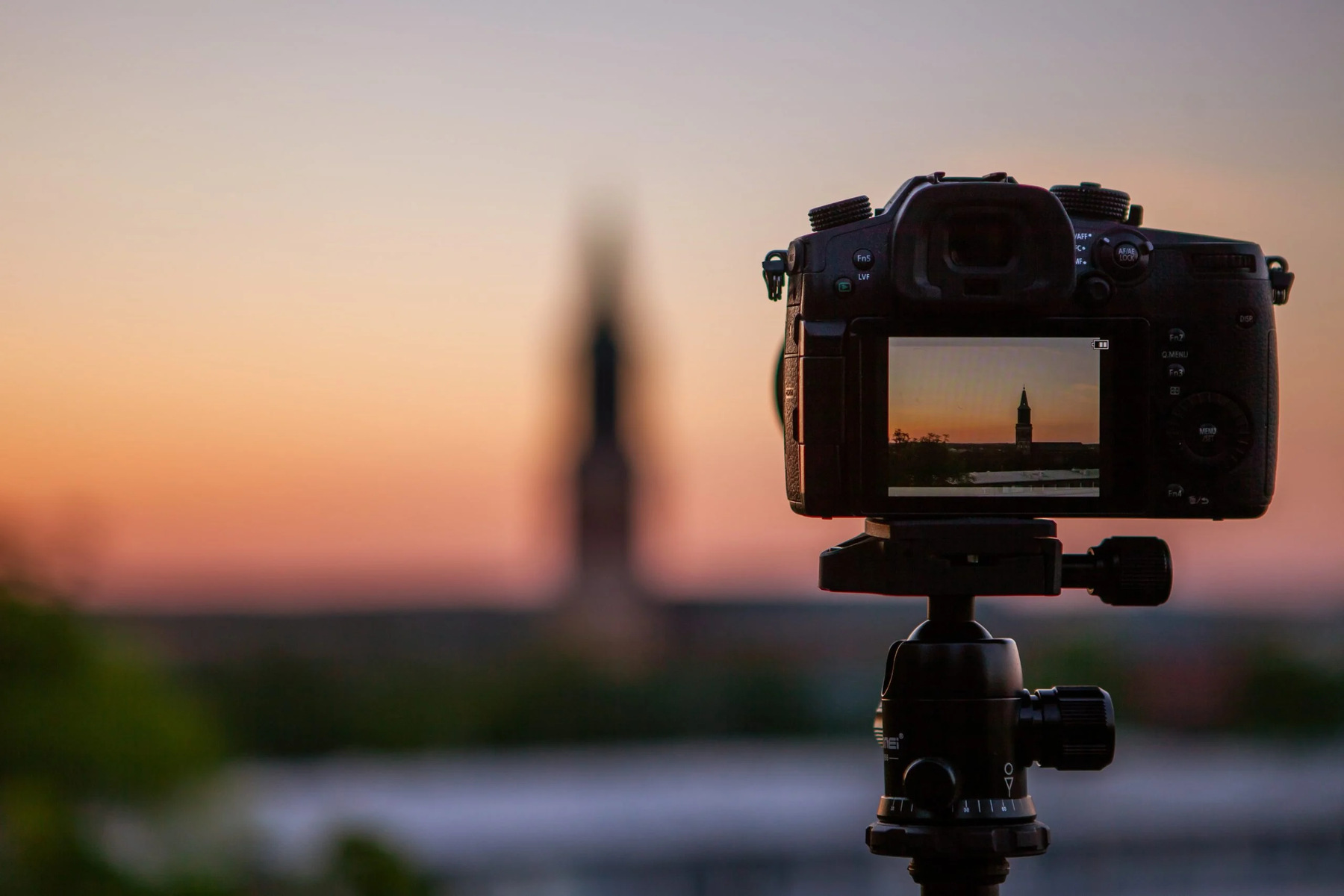Introduction
Welcome to the world of photography, where technology and creativity converge to capture moments and tell stories. In this digital age, the evolution of cameras has been nothing short of remarkable, and one of the most significant advancements is the full-frame mirrorless camera. This revolutionary piece of technology has sparked a wave of excitement among photography enthusiasts and professionals alike, offering a new realm of possibilities in image capture.
The transition from traditional DSLR cameras to mirrorless systems has been a game-changer, and the emergence of full-frame mirrorless cameras has further reshaped the landscape of photography. These cutting-edge devices combine the portability and versatility of mirrorless technology with the superior image quality and performance of full-frame sensors, redefining the way photographers approach their craft.
As we delve into the world of full-frame mirrorless cameras, we will explore the fundamental aspects of this technology, including its definition, advantages, disadvantages, and considerations for choosing the right camera for your specific needs. Whether you are a seasoned professional looking to upgrade your gear or an aspiring photographer seeking the perfect tool to unleash your creativity, understanding the intricacies of full-frame mirrorless cameras is essential for making informed decisions and capturing stunning imagery.
Join us on this enlightening journey as we unravel the marvels of full-frame mirrorless cameras, uncovering their potential to elevate your photographic pursuits to new heights. Let's embark on an exploration of innovation, artistry, and the boundless capabilities offered by these remarkable devices.
What is a Full-Frame Mirrorless Camera?
A full-frame mirrorless camera is a cutting-edge photographic device that integrates the advanced features of mirrorless technology with a full-frame image sensor, offering unparalleled performance and versatility. Unlike traditional DSLR cameras, which employ a complex system of mirrors and optical viewfinders, mirrorless cameras utilize a digital display or electronic viewfinder to preview and capture images. The “full-frame” designation refers to the use of a sensor that is equivalent in size to a 35mm film frame, enabling the camera to capture a wider field of view and produce high-resolution images with exceptional clarity and detail.
At the heart of a full-frame mirrorless camera lies its sensor, which plays a pivotal role in determining image quality and low-light performance. The larger size of a full-frame sensor allows for greater light-gathering capabilities, resulting in superior dynamic range, reduced noise, and stunning depth of field control. This, in turn, empowers photographers to achieve breathtaking results in various shooting conditions, from expansive landscapes to intimate portraits.
Moreover, the absence of a mirror mechanism in mirrorless cameras contributes to their compact and lightweight design, making them ideal companions for photographers on the move. This streamlined construction, coupled with the elimination of the optical viewfinder, allows for a more intuitive shooting experience and opens up new creative possibilities, such as real-time exposure and white balance previews directly in the electronic viewfinder.
Full-frame mirrorless cameras also embrace a diverse range of lens options, thanks to adaptable lens mounts that accommodate a multitude of optics from various manufacturers. This flexibility enables photographers to explore a rich selection of lenses, from wide-angle and telephoto to macro and specialty optics, expanding their artistic horizons and catering to specific photographic genres.
In essence, a full-frame mirrorless camera represents a harmonious blend of innovation and tradition, embodying the spirit of photographic excellence while embracing the advancements of modern technology. It stands as a testament to the relentless pursuit of imaging perfection, offering photographers a gateway to unrivaled image quality, creative freedom, and boundless potential.
Advantages of Full-Frame Mirrorless Cameras
Full-frame mirrorless cameras present a myriad of advantages that cater to the evolving needs and creative aspirations of photographers. These cutting-edge devices have redefined the possibilities of image capture, offering a host of benefits that set them apart from traditional camera systems.
- Superior Image Quality: The utilization of a full-frame sensor enables mirrorless cameras to deliver exceptional image quality, characterized by high resolution, impressive dynamic range, and remarkable low-light performance. This translates to stunningly detailed photographs with true-to-life colors and exquisite tonal gradations, elevating the visual impact of every image captured.
- Compact and Lightweight Design: By eliminating the bulky mirror and prism system found in DSLRs, full-frame mirrorless cameras are inherently more compact and lightweight, making them highly portable and ideal for travel, street photography, and on-location shoots. This streamlined design enhances mobility without compromising on image quality or performance.
- Real-Time Feedback and Exposure Preview: The electronic viewfinder of mirrorless cameras provides real-time feedback, allowing photographers to preview exposure, white balance, and depth of field before capturing an image. This feature empowers photographers to make precise adjustments on the fly, resulting in more accurate and consistent exposures.
- Adaptability and Lens Compatibility: Full-frame mirrorless cameras boast versatile lens mounts that accommodate a wide array of lenses, including those from third-party manufacturers. This compatibility opens up a world of creative possibilities, enabling photographers to explore diverse focal lengths, apertures, and optical characteristics to suit their specific shooting requirements.
- Silent Shooting and Enhanced Autofocus: Mirrorless cameras offer silent shooting modes, making them well-suited for discreet or noise-sensitive environments. Additionally, advanced autofocus systems with intelligent tracking and eye detection capabilities ensure swift and accurate focus, empowering photographers to capture fleeting moments with precision and confidence.
- Video Capabilities: Full-frame mirrorless cameras excel in the realm of video, providing high-quality 4K recording, advanced video autofocus, and versatile frame rate options. This makes them valuable tools for videographers and content creators seeking professional-grade video performance in a compact and adaptable package.
These advantages collectively position full-frame mirrorless cameras as formidable tools for photographers and visual storytellers, offering a seamless fusion of innovation, performance, and creative freedom. The convergence of cutting-edge technology and traditional imaging principles empowers photographers to push the boundaries of their craft and unlock new realms of visual expression.
Disadvantages of Full-Frame Mirrorless Cameras
While full-frame mirrorless cameras boast a plethora of advantages, it is essential to acknowledge that they also have certain limitations that may impact their suitability for specific photographic scenarios. Understanding these drawbacks is crucial for photographers to make informed decisions and mitigate potential challenges when utilizing mirrorless systems.
- Battery Life: The electronic viewfinder and continuous use of sensor-based autofocus systems can lead to higher power consumption in mirrorless cameras compared to DSLRs. This often results in shorter battery life, necessitating the need for spare batteries during extended shooting sessions.
- Cost of High-End Lenses: While full-frame mirrorless cameras offer lens adaptability, the cost of high-quality native lenses designed specifically for these systems can be substantial. Investing in a diverse range of premium lenses may require a significant financial commitment, especially for photographers seeking specialized optics.
- Heat Build-Up During Continuous Shooting: The compact form factor of mirrorless cameras, coupled with the absence of a mirror to dissipate heat, can lead to thermal issues during prolonged continuous shooting, potentially impacting performance and longevity. This is particularly relevant in demanding shooting environments or when capturing high-speed bursts of images.
- Electronic Viewfinder Lag: While electronic viewfinders offer real-time feedback, some photographers may experience a perceptible lag or delay in the display, especially in low-light conditions or when tracking fast-moving subjects. This can impact the fluidity of composition and timing for certain types of photography.
- Limited Native Lens Selection: Despite the adaptability of mirrorless systems, the native lens lineup for some full-frame mirrorless cameras may not be as extensive as that of established DSLR systems. This can restrict the availability of specialized or niche lenses, potentially limiting options for certain photographic genres.
- Concerns with Electronic Failures: The reliance on electronic components in mirrorless cameras introduces the possibility of technical malfunctions related to electronic viewfinders, sensor readouts, or other electronic subsystems. While modern cameras are engineered for reliability, electronic failures can pose unique challenges compared to mechanical issues in traditional cameras.
By acknowledging these limitations, photographers can approach their creative endeavors with a comprehensive understanding of the practical considerations associated with full-frame mirrorless cameras. While these disadvantages warrant careful consideration, they are balanced by the remarkable capabilities and innovative features that define the modern era of mirrorless photography.
How to Choose the Right Full-Frame Mirrorless Camera for You
When embarking on the journey to select the ideal full-frame mirrorless camera, several key considerations come into play, each tailored to align with your unique photographic style, preferences, and creative aspirations. By navigating these essential factors, you can make an informed decision that harmonizes with your vision and empowers you to unleash your full potential as a photographer.
- Image Quality and Resolution: Evaluate the sensor resolution and low-light performance of each camera, considering your typical shooting scenarios and the level of detail required for your work. Assess sample images and reviews to gauge the image quality and color reproduction of each camera under various conditions.
- Size, Weight, and Ergonomics: Consider the physical dimensions and weight of the camera body, as well as the layout and accessibility of controls. Ensure that the camera feels comfortable in your hands and is conducive to extended shooting sessions, especially if you frequently engage in handheld or documentary-style photography.
- Autofocus Performance: Assess the speed, accuracy, and tracking capabilities of the autofocus system, particularly if you specialize in fast-paced or dynamic subjects such as sports, wildlife, or event photography. Look for features such as eye detection and subject recognition to enhance your ability to capture decisive moments with precision.
- Video Capabilities: If videography is integral to your creative pursuits, delve into the camera’s video specifications, including resolution, frame rates, and video autofocus performance. Consider the availability of advanced video features such as log profiles, high frame rate recording, and professional audio inputs for comprehensive video production.
- Native Lens Ecosystem: Explore the availability and diversity of native lenses compatible with the camera system, paying attention to specialized optics that align with your preferred genres. Assess the roadmap for future lens releases to gauge the long-term viability and growth potential of the lens ecosystem.
- Customization and Interface: Evaluate the customization options, menu layout, and user interface of each camera to ensure that it aligns with your workflow and shooting preferences. Look for intuitive controls, customizable buttons, and user-friendly menus that streamline your creative process and enhance operational efficiency.
- Battery Life and Accessories: Consider the battery life and availability of compatible accessories such as battery grips, external chargers, and power management solutions. Assess the practicality of the camera’s power system, especially if you engage in extended photo outings or professional assignments that demand reliable endurance.
- Brand Ecosystem and Support: Factor in the broader ecosystem of the camera brand, including the availability of service centers, professional support, and compatibility with existing accessories or lenses from your current gear arsenal. Consider the long-term commitment and investment potential within the brand’s photographic ecosystem.
By meticulously evaluating these considerations and aligning them with your individual needs and creative objectives, you can confidently select the right full-frame mirrorless camera that serves as a seamless extension of your vision and empowers you to craft compelling visual narratives with unparalleled precision and artistry.
Conclusion
The realm of full-frame mirrorless cameras represents a convergence of innovation, artistry, and technological prowess, offering photographers a gateway to unparalleled image quality, creative freedom, and boundless potential. As these cutting-edge devices continue to redefine the landscape of photography, it is imperative for enthusiasts and professionals alike to embrace the transformative capabilities and nuanced considerations associated with this revolutionary technology.
From the exceptional image quality and compact design to the adaptability of lens options and advanced features such as real-time feedback and silent shooting, full-frame mirrorless cameras have elevated the standard of photographic excellence while fostering a dynamic and immersive shooting experience. The advantages of mirrorless systems, coupled with their inherent limitations, underscore the need for informed decision-making and a nuanced understanding of the practical considerations that shape the selection of the right camera for individual needs.
By navigating the intricacies of image quality, ergonomics, autofocus performance, video capabilities, lens ecosystems, and brand support, photographers can embark on a journey of discovery and empowerment, selecting the perfect full-frame mirrorless camera that resonates with their artistic vision and amplifies their creative potential. Whether capturing breathtaking landscapes, emotive portraits, exhilarating action, or compelling cinematic narratives, the right camera becomes an extension of the photographer’s imagination, enabling them to translate moments into timeless visual stories with precision and authenticity.
As the evolution of full-frame mirrorless technology continues to unfold, fueled by innovation and a commitment to imaging excellence, photographers stand at the threshold of a new era, where every frame becomes a canvas for boundless expression and every click resonates with the essence of their creative spirit. Embrace the journey, immerse yourself in the possibilities, and let the transformative power of full-frame mirrorless cameras propel your photographic odyssey to extraordinary heights.







